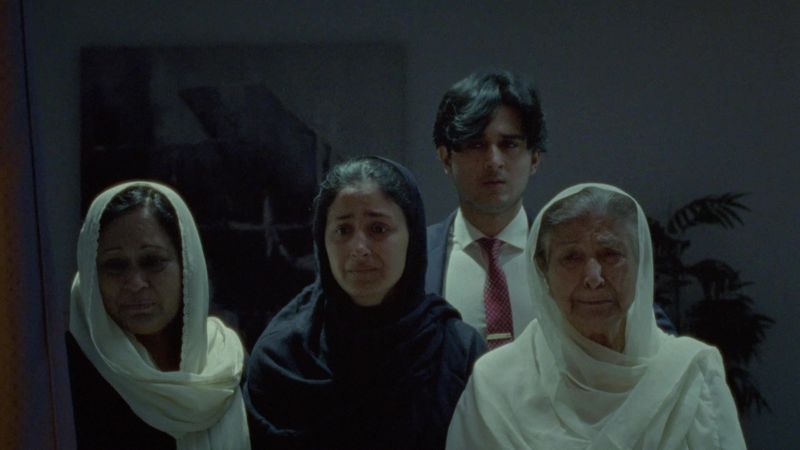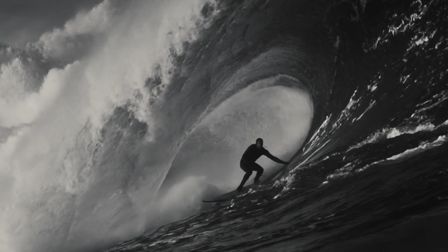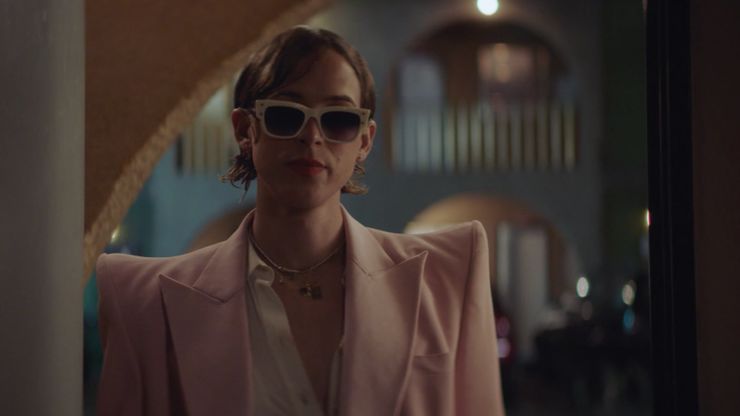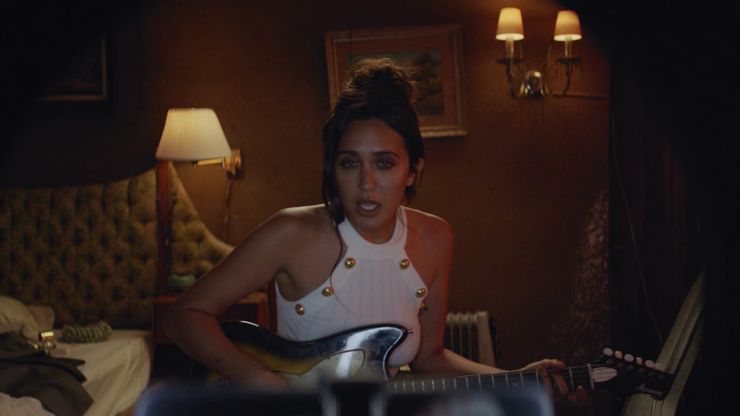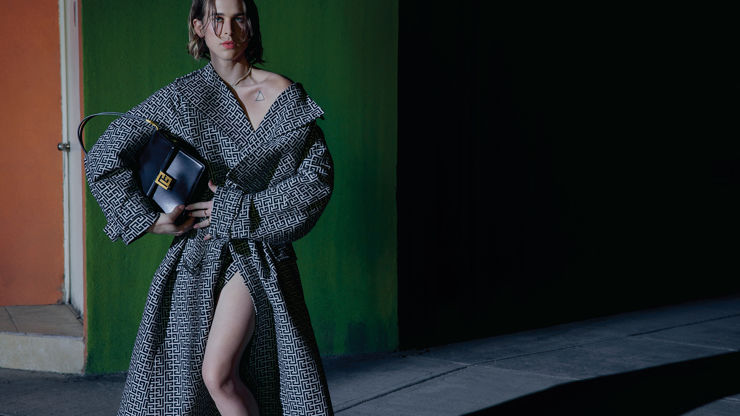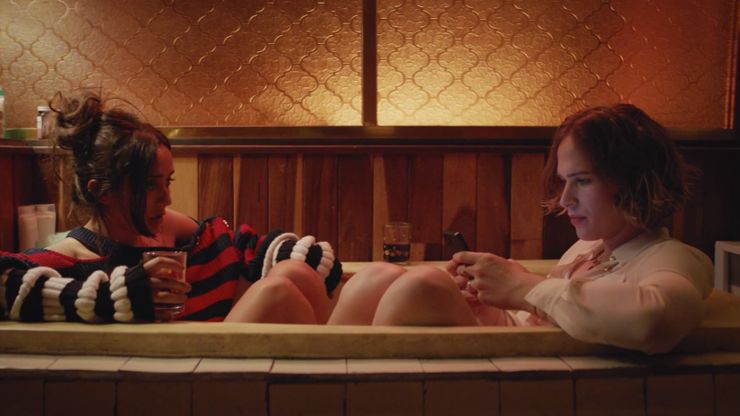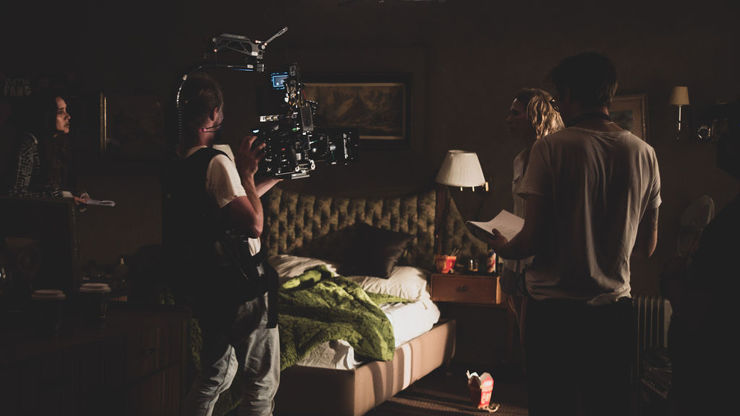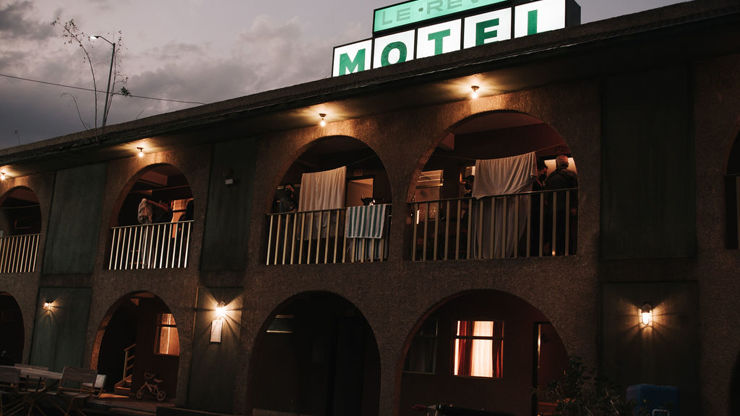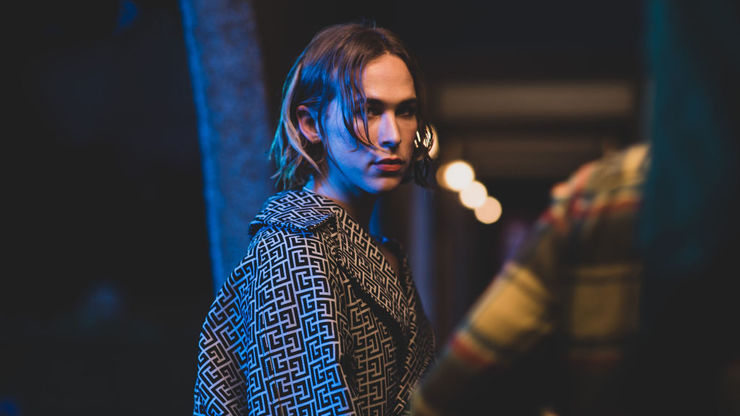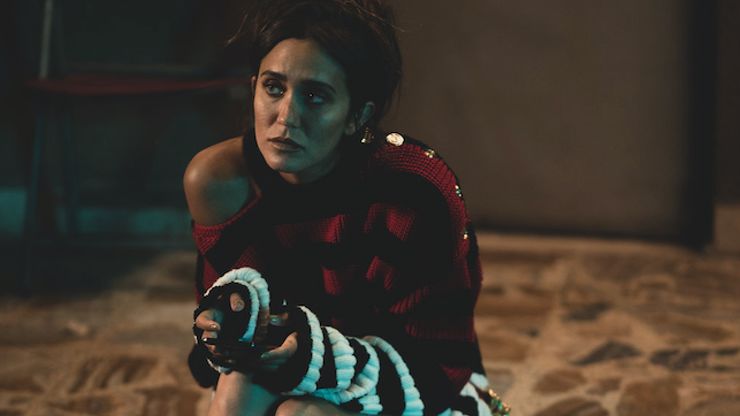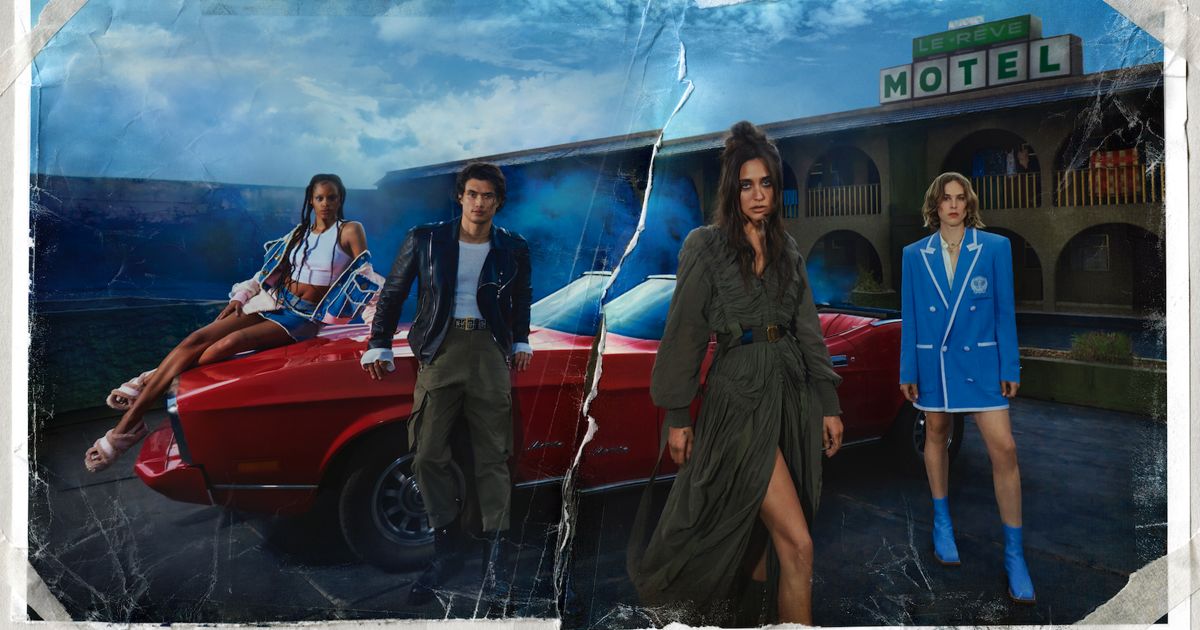How Balmain designed a new approach to branded entertainment
With the release today of Balmain's newest project, a long form drama series available on All4, the rules of branded entertainment may have been re-written. We speak to the agency behind the series about the age of flexible formats, the battle for audience eyeballs and this dramatic move for the fashion house.
Until now there have been two types of fashion film; good ones [see Kenzo's My Mutant Brain or Rag & Bone's Why Can't We Get Along?] and ones that are, essentially, moving catalogue images.
But, with the release of Fracture, a five-part drama series from fashion house Balmain, London-based agency The Sunshine Company and PRETTYBIRD directors Bradley & Pablo, the bar for how a brand engages an audience and, crucially, entertains it, has been raised.
Starring US singer-songwriter Jesse Jo Stark (who also wrote music for the series), Fracture is a music-led drama series centring on a 20-something, up-and-coming musician called Mya (Stark) who's battling writer’s block. The series is set in the characterful Le Rêve Motel on the outskirts of LA and includes a variety of fateful encounters with fellow residents which, along with an estranged sibling, force Mya to confront her painful past.
Unlike other entries into the fashion film canon, Fracture will be broadcast on UK on demand channel All4 as well as via fractureseries.com for global audiences, and below, Al MacCuish, Sunshine's Founder and Chairman and Catherine Hope, Sunshine's EVP Creative and Entertainment, discuss the genesis of the project, the age of flexible formats, the battle for audience eyeballs, and why the best story always wins.
Credits
View on- Director Bradley & Pablo
- Creative Director Catherine Hope
- Executive Producer Ted Thornton
- Producer Ross Levine
- DP Pablo Berron
- 2nd unit DP Laura Merians Goncalves
- Composer Michael Yezerski
Explore full credits, grab hi-res stills and more on shots Vault
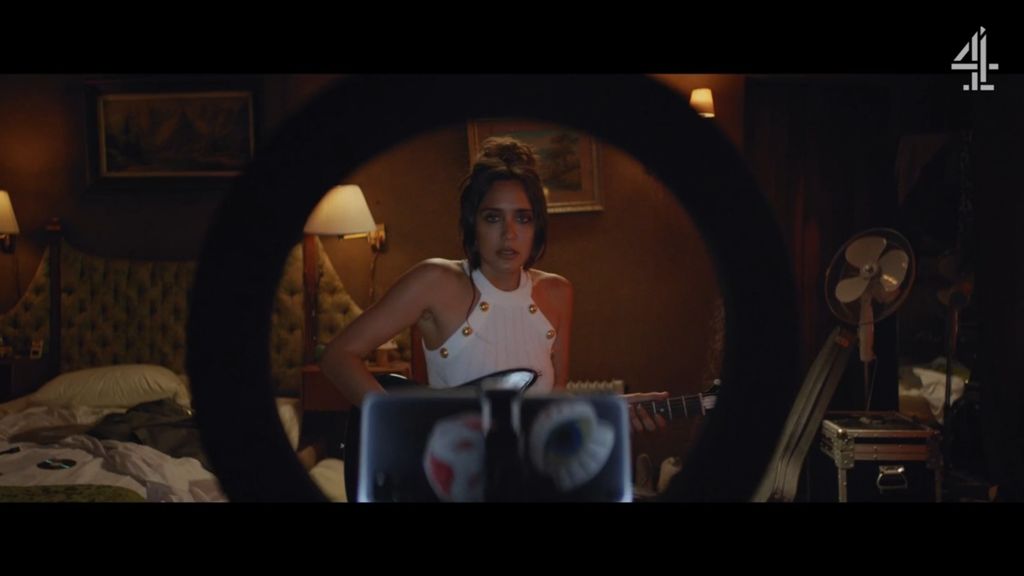
Credits
powered by- Director Bradley & Pablo
- Creative Director Catherine Hope
- Executive Producer Ted Thornton
- Producer Ross Levine
- DP Pablo Berron
- 2nd unit DP Laura Merians Goncalves
- Composer Michael Yezerski
Above: The trailer for Balmain's long format series, Fracture.
Where did this idea come from, what did the client want, and how did you approach it?
CH: It’s been about three or four years in the making. Not the series itself but the entertainment roadmap that allowed them to get to this point. Our shared intention was to always move beyond fashion behaviour and reinvent the space.
Our shared intention was to always move beyond fashion behaviour and reinvent the space.
In terms of the final story and its development, that took about 18–24 months as it was original, with no source material, (not to mention Covid). It requires absolute conviction, resilience and bravery on the client’s side because it’s not something that you can just turn around in six months, and there was no question that they were going to do it.
Did the client need much convincing to move ahead with such a bold campaign?
AM: When we first started the business, which was nine years ago, our founding client was Gucci and the first year of the business was working on the Chime for Change platform. It was a set of dynamics which that particular business had in place which we actually probably took for granted at the time, and it was exactly as Cat’s saying there, it was bravery and conviction.
If you think about what fashion is as an industry, [creativity is] the lifeblood of it.
We’ve always had a lot of fashion clients and one of the things that we realised quite early on [was that] creativity is considered to be the most powerful and valuable thing that the organisation has, and which it focuses on, and if you think about what fashion is as an industry, that’s the lifeblood of it. They have to constantly be inventing, recreating, pushing forward, pioneering and Balmain is defined by firsts.
Everything that house has done has been about trying to push boundaries. It’s never easy to make it happen but you’re starting from exactly the same point as opposed to the instances where we did have what we felt was the right solution to what a client or a brand needed, and we did find we were in these conversations where we were trying to persuade and cajole, and at some point the energy either runs out of it or something else will come along that becomes a priority.

Above: Catherine Hope, Sunshine's EVP Creative and Entertainment, and Sunshine Founder and Chairman, Al MacCuish.
Was tying the fashion itself into the story of the drama a difficult task?
AM: There’re a couple of really strong opportunities and links between fashion and entertainment, particularly drama, the first of which is that the metabolism of the fashion industry is not dissimilar to the metabolism of the entertainment industry. You’re designing collections a year, 18 months in advance, you know exactly what is going to be happening quite a long way out, so you can plan for that.
From a product perspective, it’s not just an easy product to integrate into drama, it’s actually an incredibly important product to integrate.
The same thing happens in the entertainment industry but at a more granular level and, fundamentally, at a creative level. Fashion, by definition, is linked very strongly to identity and to self-expression. So, from a product perspective, it’s not just an easy product to integrate into drama, it’s actually an incredibly important product to integrate into drama because it is such an incredibly important part of the dramatic process. The thought that went into the styling and the attribution of different products to different characters was incredibly intentional, but it actually is improving the quality of the storytelling. Fashion does have an unfair advantage when it comes to being able to harness true drama, true storytelling, because it’s such a natural part of the art form. It’s much more difficult if you’re a soda or an FMCG product.
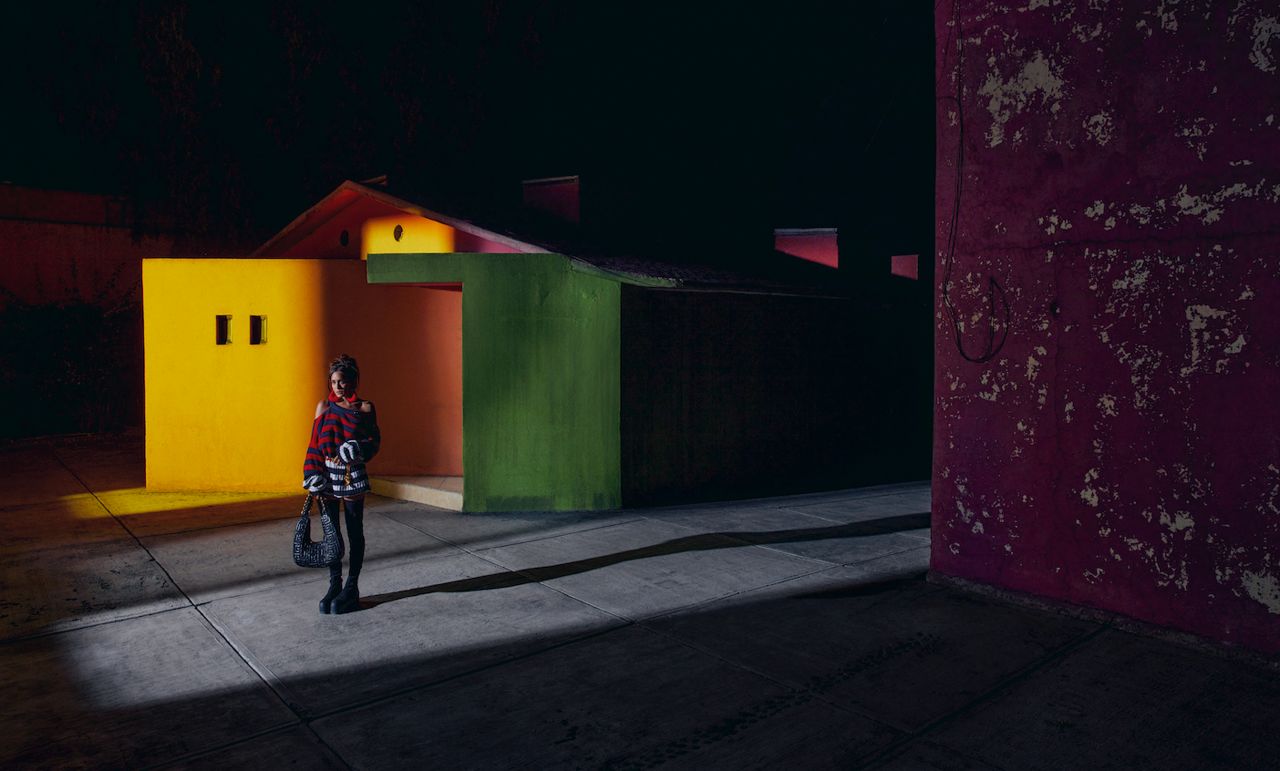
Above: Singer-songwriter Jesse Jo Stark stars as frustrated musician Mya in Fracture.
What was the actual process of getting to the story and what it would be, how it would work, how many episodes and how long they would be?
CH: I’ve worked on similar projects with Al and that helped because we were aware of the lead times. We could educate the client [about] the process and things like rewrites. We created a detailed writer’s brief which hones down a genre and the tone. We longlisted writers, got treatments back, but none of that was capturing who they [Balmain] were. It really got to the point where we asked ourselves, why are we were asking other people to do this when we knew the brand better than anyone?
The story was right in front of us: it’s been informed by Olivier’s own back story and rise to prominence.
Alongside Balmain, we then created the rough story using a longform outline, complete with character breakdowns. We then pitched that to [All4 parent channel] Channel 4. The story was right in front of us: it’s been informed by Olivier’s [Rousteing, Balmain Creative Director] own back story and rise to prominence, his cultural references, and how music drives his creative process. While the circumstances are different, his arc to follow his dreams, despite the odds, is really [main protagonist] Mya’s arc.
Then, Channel 4 and [writer] Glenn Waldron really made it into what it is on screen. They have been an absolute dream. They knew how to break our rough story apart and rebuild it into a powerfully simple narrative with humour and heart.
Above: Images from episode one of Fracture.
How did you decide on the length of the whole story, and of each episode?
CH: We look at the budget and that will determine X-number of minutes. But the short-form format is an important one, especially for this audience. It’s essentially a pilot for a longform drama. Five x 10-minute episodes felt like the right shape for a short story that will mostly be consumed digitally.
We’re definitely living in an age, where there’s a lot more flexibility around format and format length.
AM: We’re definitely living in an age now that’s particularly driven by the streaming channels, where there’s a lot more flexibility around format and format length. What was interesting when we first started getting into this space was the constraints of say a 30- or a 60-second commercial. But the same constraints existed in drama because it was either an hour drama, a half hour drama or, with commercial drama, it was 22 minutes because you had to account for the advertising.
We’ve got production partners in the US who have incredible legacies in feature films but they’re much more interested in Instagram video and TikTok at the moment because they know that’s where the audience is.
But, over the last six or seven years, that that has just completely blown up and expanded, so you’ve now got a generation of writers and distributors who are finding the right format for the story, because some stories are able to sustain longer periods of time. It’s just another example of being able to push boundaries in storytelling. I mean, we’ve got production partners in the US who have incredible legacies in feature films but they’re much more interested in Instagram video and TikTok at the moment because they know that’s where the audience is. That’s always the consideration when you’re creating anything; who is the audience? Where is that audience? What are the formats? What type of content are they consuming? You’ve always got that at the forefront of your mind when you’re creating projects like this.
As a piece of programming, how will it be defined?
CH: Legally, you have to attribute the piece, as it’s produced by a brand. But because the product is valuable as a piece of storytelling, Channel 4 will promote it as any other drama series, using trailers on linear TV.
Above: Images from the accompanying stills campaign, shot by photographer An Le through Now Open.
Do you think this sort of project heralds a new approach for advertising?
AM: Yes. This is such an interesting junction because Cat and I, and the rest of the team, have been working on projects like this for quite a long time now, and it feels like a genuine opportunity for brands to be publishers and the tellers of a story. In many ways they’ve been doing that through advertising, and it’s the very best brands, who work with the best partners, that have been very successful at landing an impression and building worlds through short form, interruptive advertising. But because the media landscape has fundamentally evolved, younger audiences don’t watch platforms where there is advertising, but they’re also incredibly interested in brands.
Because the media landscape has fundamentally evolved, younger audiences don’t watch platforms where there is advertising.
If you’re a young sneaker-head, you will find the stories about the sneaker brand that you’re obsessed with, or the artist that you’re interested in. So, I think, at a macro level, you’re seeing this rewiring of the place in media where brands can positively exist. And it’s not to say that advertising doesn’t have a role, because of course it does. There are lots and lots of very, very good reasons for short form, message driven communications, particularly if you’re in categories that are low interest. But I think there’s this perfect storm for fashion and luxury, because of where the entertainment industry is at the moment, and where media is at the moment.
The best story wins, and the more things that are competing for a finite amount of attention, the greater the premium that’s going to be attributed to really good storytelling.
It’s a natural thing for [a brand] like that to look for other formats and mediums to be able to build and publish a story, and I think that is a really exciting place for both industries to find themselves at because the best story wins, in any medium, whether it’s journalism, marketing and advertising, drama. The best story wins, and the more things that are competing for a finite amount of attention, the greater the premium that’s going to be attributed to really good storytelling.
Above: Images from episode two of Fracture.
Will it be hard for projects like Fracture to find an audience among the myriad of content out there?
AM: These types of projects are actually incredibly respectful of the audience because, if you’re asking somebody for 40-50 minutes of their time then yes, you are competing with the best entertainment in the world, because there’s a lot of brilliant entertainment out there that you could spend an hour with.
The most commercial industry I know is the entertainment industry.
I think that’s another component of this; valuing and being respectful of audience’s time. I’ve always found it slightly ironic because the most commercial industry I know is the entertainment industry. So, whether it’s being funded by a brand or it’s being funded by a broadcaster or whether it’s being funded by one of the many entities that fund entertainment and seek a return from it, all that truly matters is, is it meaningful, is it engaging and did it reward the person for the attention that they gave it?
With branded entertainment, there’s often the question of balance; how much brand versus how much entertainment? What are your thoughts on that?
AM: You can look at it from a slightly different angle which is to say, in brand building today - and that’s really what we’re talking about here - how you behave as a brand is incredibly important and directional for a consumer. The reason why we’re so obsessed with fashion as a category is because of the creativity and the bold moves that are constantly being made, but it can be enough for a potential customer or a fan to go, ‘that’s a good idea’.
What you’re signalling to the consumer is that we respect you, we respect your time, we want to be the teller of stories. We’re not just selling things.
So, even marketing for the content itself has got a slightly different value proposition at heart because what you’re signalling to the consumer is that we respect you, we respect your time, we want to be the teller of stories. We’re not just selling things.
If somebody thinks well of that brand and then they want to go and look at what their commerce is, that’s a totally legitimate way to build an impression in somebody’s mind, but you’re putting something out there into the world that has got a value, and that value reflects well on you as a brand, and that’s where we talk about brands as publishers and storytellers, and there’s a lot of them in this category that are beginning to see that that’s what they’ve always done through their fashion shows. Now there’s new opportunities to do it through other mediums.
Above: Some behind the scenes images from the Fracture shoot.
Might there be a Season Two of Fracture?
Cat: As with any piece of entertainment, it has to first and foremost be successful, but if it is successful then it could mean the development of Season Two. Her [Mya’s] story’s only at the beginning and the grand dream, and proof of whether this kind of strategy works, is if you go into long form and that you have [both viewers and distributors] investing in it.
)

